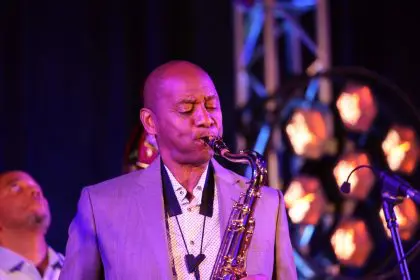The rap mogul Future finds himself at the center of a complex legal dispute as Minnesota-based MIK Corporation files a lawsuit over the unauthorized use of their signature “Limo-Jet” vehicle. The legal action, which also names Egyptian performer Mohammed Ramadan and Lebanese-Canadian artist Sari Abboud, stems from the vehicle’s appearance in their collaborative music video ARABI. This dispute marks a significant intersection between intellectual property rights and creative expression in the music industry, potentially affecting Future’s extensive portfolio and international collaborations.
Understanding the Limo-Jet phenomenon
The Limo-Jet represents a revolutionary fusion of aviation and luxury ground transportation. This distinctive vehicle, crafted from a transformed jet fuselage, stands as MIK Corporation’s flagship creation. The company maintains exclusive trademark rights over this unique concept, offering it as a premium rental option for elite events and special occasions. The vehicle’s distinctive design and luxurious features have made it a sought-after choice for high-profile events, music videos, and celebrity gatherings, commanding rental fees that reflect its exclusive status in the luxury transportation market.
Timeline of events
The controversy traces back to April 2023, when Mohammed Ramadan initiated contact with MIK regarding potential Limo-Jet appearances in California and Dubai shows. A crucial meeting in Des Plaines, Illinois, established clear terms: any footage featuring the Limo-Jet required explicit permission from MIK, and the vehicle’s integrity must be preserved. This agreement reflected standard industry practices for protecting intellectual property rights while allowing for creative collaboration.
The situation escalated when the vehicle allegedly sustained damage during the Illinois visit, creating tension between the parties even before the music video’s release. The February 2024 debut of ARABI further complicated matters, as the Limo-Jet featured prominently in scenes that MIK claims were never authorized for commercial use.
Legal intricacies and developments
The case has already seen significant movement with Universal Music Group (UMG) successfully arguing for dismissal based on jurisdictional grounds. The court’s decision highlighted the complexities of establishing agency relationships in multi-party disputes spanning different states. MIK retains the option to revise their complaint by December 15, potentially reshaping the case’s trajectory.
The lawsuit encompasses multiple legal theories, including breach of contract regarding usage rights and property damage, negligence in handling the vehicle during filming, fraudulent misrepresentation of intended use, misappropriation of trademark and intellectual property, and potential damages to brand reputation and market value. Legal experts suggest this case could set precedents for how courts handle international entertainment disputes involving intellectual property rights, particularly when multiple jurisdictions are involved.
Industry impact and implications
This legal confrontation spotlights the delicate balance between artistic expression and intellectual property rights in contemporary entertainment. The outcome could establish significant precedents for how artists and music industry professionals approach property usage in creative content. Future’s involvement in this dispute serves as a cautionary tale about the importance of proper clearances and permissions in music video production.
The entertainment industry must address several critical questions, including navigating international intellectual property rights, defining fair use in music video production, protecting creators while maintaining creative freedom, and establishing the role of record labels in ensuring proper clearances. These considerations become increasingly important as the industry continues to globalize.
Global entertainment landscape
The international nature of this dispute reflects the increasingly global character of the music industry. Artists frequently collaborate across borders, creating complex legal scenarios involving multiple jurisdictions and legal systems. This case highlights the need for clearer international standards governing intellectual property rights in entertainment.
Industry professionals suggest implementing enhanced documentation of property usage agreements, establishing clear communication channels between parties, securing comprehensive insurance coverage for high-value props, conducting detailed pre-production legal reviews, and developing standardized protocols for international collaborations.
Moving forward
As the case progresses, its resolution will likely influence how artists and property owners approach similar collaborations in the future. The entertainment industry watches closely, recognizing that the outcome could reshape standard practices in music video production and international artistic collaboration. The resolution of this case may serve as a blueprint for handling similar disputes in the increasingly interconnected world of global entertainment.













